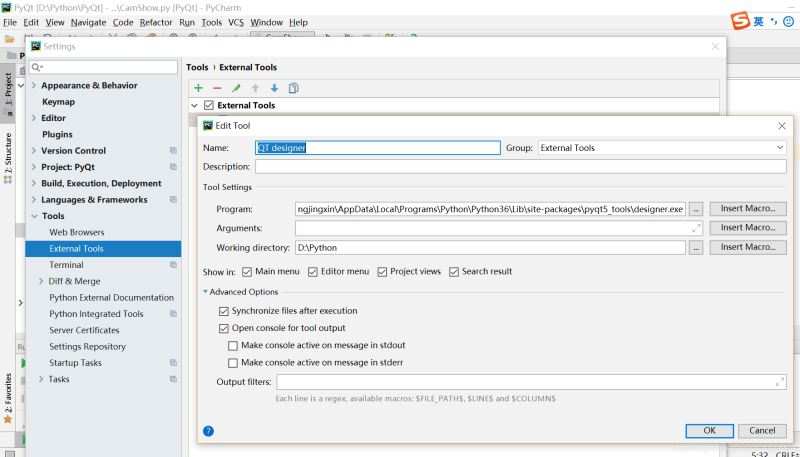Python内置函数dir详解
1.命令介绍
最近学习并使用了一个python的内置函数dir,首先help一下:
>>> help(dir)
Help on built-in function dir in module __builtin__:
dir()
dir([object]) -> list of strings
Return an alphabetized list of names comprising (some of) the attributes
of the given object, and of attributes reachable from it:
No argument: the names in the current scope.
Module object: the module attributes.
Type or class object: its attributes, and recursively the attributes of
its bases.
Otherwise: its attributes, its class's attributes, and recursively the
attributes of its class's base classes.
通过help,可以简单的认为dir列出指定对象或类的属性。
2.实例
下面是一个简单的测试:
class A:
def a(self):
pass
class A1(A):
def a1(self):
pass
if __name__ == '__main__':
print("dir without arguments:", dir())
print("dir class A:", dir(A))
print("dir class A1:", dir(A1))
a = A1()
print("dir object a(A1):", dir(a))
print("dir function a.a:", dir(a.a))
测试结果:
dir without arguments: ['A', 'A1', '__builtins__', '__doc__', '__file__', '__name__', '__package__']
dir class A: ['__class__', '__delattr__', '__dict__', '__doc__', '__eq__', '__format__', '__ge__', '__getattribute__', '__gt__', '__hash__', '__init__', '__le__', '__lt__', '__module__', '__ne__', '__new__', '__reduce__', '__reduce_ex__', '__repr__', '__setattr__', '__sizeof__', '__str__', '__subclasshook__', '__weakref__', 'a']
dir class A1: ['__class__', '__delattr__', '__dict__', '__doc__', '__eq__', '__format__', '__ge__', '__getattribute__', '__gt__', '__hash__', '__init__', '__le__', '__lt__', '__module__', '__ne__', '__new__', '__reduce__', '__reduce_ex__', '__repr__', '__setattr__', '__sizeof__', '__str__', '__subclasshook__', '__weakref__', 'a', 'a1']
dir object a(A1): ['__class__', '__delattr__', '__dict__', '__doc__', '__eq__', '__format__', '__ge__', '__getattribute__', '__gt__', '__hash__', '__init__', '__le__', '__lt__', '__module__', '__ne__', '__new__', '__reduce__', '__reduce_ex__', '__repr__', '__setattr__', '__sizeof__', '__str__', '__subclasshook__', '__weakref__', 'a', 'a1']
dir function a.a: ['__call__', '__class__', '__delattr__', '__doc__', '__eq__', '__format__', '__func__', '__ge__', '__get__', '__getattribute__', '__gt__', '__hash__', '__init__', '__le__', '__lt__', '__ne__', '__new__', '__reduce__', '__reduce_ex__', '__repr__', '__self__', '__setattr__', '__sizeof__', '__str__', '__subclasshook__']
3.使用dir查找module下的所有类
最初使用这个函数的初衷,就是在一个module中查找实现的类名,通过该函数可以很容易的实现。
比如把上面的测试程序保存为A.py,再建一个测试程序,内容如下:
import A
if __name__ == '__main__':
print("dir module A:", dir(A))
结果如下:
dir module A: ['A', 'A1', '__builtins__', '__doc__', '__file__', '__name__', '__package__']
可以看出class A和A1都能够找到。
4.如何找到当前模块下的类
这是一个烦恼较长时间的一个问题,也没有搜到详细的解决方法,下面是我的集中实现方法。
4.1.方法一:在module下面直接调用
比如在上面的A.py最下面添加一行,即可在后续的代码中可以使用selfDir来查找当前的module下的类,修改后的代码如下:
class A:
def a(self):
pass
class A1(A):
def a1(self):
pass
curModuleDir=dir() # get dir of current file(module)
if __name__ == '__main__':
print("dir without arguments:", dir())
print("dir class A:", dir(A))
print("dir class A1:", dir(A1))
a = A1()
print("dir object a(A1):", dir(a))
print("dir function a.a:", dir(a.a))
print("dir current file:", curModuleDir)
4.2.方法二:import当前module
把当前module和别的import一样引用,代码如下:
# A.py
import A as this # import current module
class A:
def a(self):
pass
class A1(A):
def a1(self):
pass
if __name__ == '__main__':
print("dir without arguments:", dir())
print("dir class A:", dir(A))
print("dir class A1:", dir(A1))
a = A1()
print("dir object a(A1):", dir(a))
print("dir function a.a:", dir(a.a))
print("dir current file:", dir(this))
4.3.方法三:根据module名称查找module,然后调用dir
我们知道module下面有个属性__name__显示module名称,怎么能够根据module名称来查找module对象呢?可以借助sys.modules。代码如下:
import sys
class A:
def a(self):
pass
class A1(A):
def a1(self):
pass
if __name__ == '__main__':
print("dir without arguments:", dir())
print("dir class A:", dir(A))
print("dir class A1:", dir(A1))
a = A1()
print("dir object a(A1):", dir(a))
print("dir function a.a:", dir(a.a))
print("dir current file:", dir(sys.modules[__name__])) # 使用__name__获取当前module对象,然后使用对象获得dir

